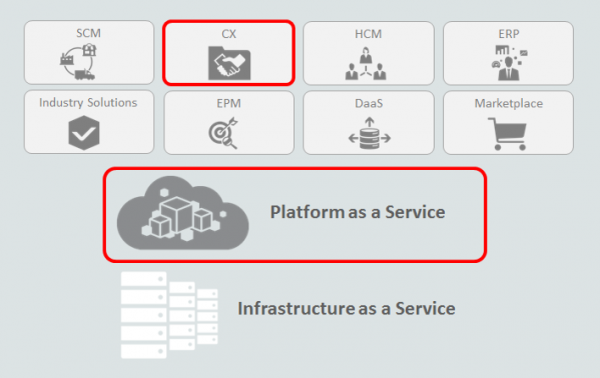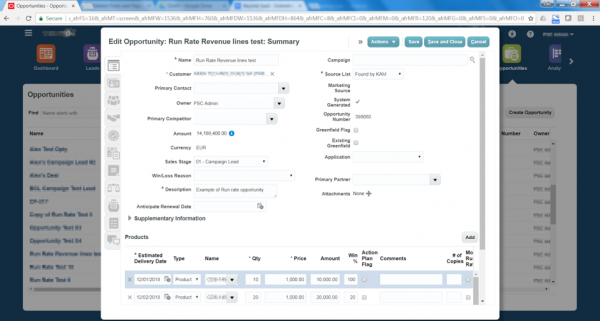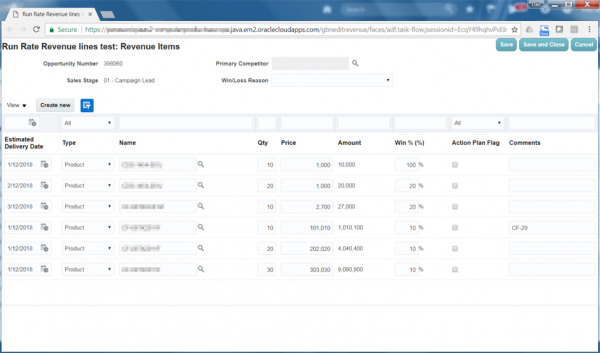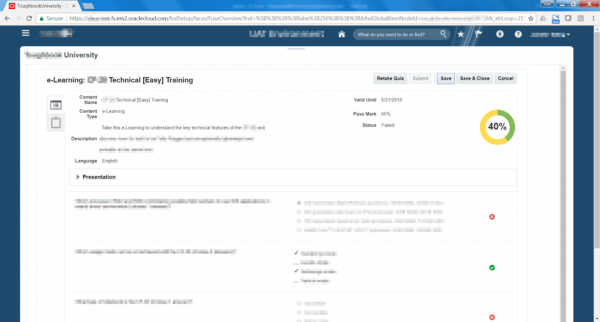Resource
Reshaping Service Experience in 2025 [eBook]
1 min read

Author: Luis Figueira
7 min read
In this blog post, I’ll explore how to get the most out of your SaaS applications, specifically Oracle CX Cloud, by leveraging the key features designed into the product and looking at when it’s necessary to go beyond the product and extend it to cater to your specific business needs. This will be illustrated with a few use cases where I've found that extending Oracle Sales Cloud with Java Cloud (part of Oracle PaaS) makes a lot of sense. These fall broadly under two categories: tailored user interfaces and custom applications that are not catered by other existing SaaS services.
I'll be covering just a few examples of PaaS extensions to SaaS applications (specifically Java Cloud Service). However, many other options are available, such as Integration Cloud Service (ICS) to design the flow of information between multiple applications, or Mobile Cloud Service (MCS) to make your SaaS and PaaS landscape available on mobile channels and to expose them on new channels such as chat.
The Cloud and, more specifically, Software as a Service (SaaS) plays a significant role within the bigger ‘digital transformation’ picture because, with proper deployment, it brings significant opportunities for businesses looking for greater agility. However, the trade-off for this increased business agility is that the feature set tends to be very focussed on a particular business function.
For example, Oracle Sales Cloud is a great tool for everything related to Sales: Sales Force Automation (SFA), Sales Performance Management (SPM), and now Partner Relationship Management (PRM). These process families have been distilled from the vast Oracle industry experience, research and market exposure, and can be fine-tuned to adjust to your processes. However, if you head a sales or marketing department and are looking to run complex marketing campaigns, the chances are you’ll be looking at products other than Sales Cloud—products known in the industry to meet those marketing-specific requirements, such as Oracle Marketing Cloud.
In other cases, some of the features you’re looking for won’t be available as other services in the SaaS family and there will be times where you need to go beyond the core features of these products. This may indicate a need to extend a SaaS service and we have explored the tools available for that in the past (take a look at our blogs on Platform as a Service for more information). More recently, we have worked directly with the Oracle Applications User Experience (OAUX) team on ways of designing these extensions, best practices involved and direction these products are going, with the objective of delivering better and future-proofed solutions to our Customers (read more about key outputs from these discussions here).
 #
#It may be the case that there is a specific need to ‘tweak’ a process in such a way that the user interface (UI) provided out-of-the-box will then not be as efficient as a purpose-built UI would be. One such example that I have encountered in the past involved a customer that had very specific needs in terms of their deal/opportunity management processes: on occasion, sales reps would find themselves needing to add a large number of revenue items onto Opportunities and also have to set a large number of fields on each revenue item. Whilst, together with the customer, the Boxfusion team did our best to simplify their processes, the ability to perform this activity was repeatedly raised as a significant user adoption issue for their sales reps.
This use case hit a usability challenge on Sales Cloud, where (at that point in time) only five revenue items could be displayed at a time before scrollbars were displayed. Also, after scrolling through five or six revenue lines, more records need to be fetched from the server, which caused lag issues. All-in-all, the Sales Cloud Browser UI is not designed around this very specific use case of having large numbers of revenue lines in an Opportunity and, as a result, the user experience was not optimal.
These limitations can be seen in the following screenshot of Sales Cloud Browser UI (note the double scrollbars on the lower right-hand side):

When Boxfusion set out to design the experience for this specific use case, we used the ‘job-to-be-done’ (JTBD) approach. The key question here is that, if we were hiring this ‘app’ to do a job, what would it be? In our case, it would be to easily and efficiently and indefinitely update opportunities with a large number of revenue items and a large number of fields per opportunity.
The JTBD approach gave us confidence that we were building the right solution for the problem; however, we still had to work in consultation with key users from the customer, in an iterative approach, to ensure we were building it ‘first-time-right’.
This was the final product:

We made use of our prior experience with the OAUX team and the resources they make available to anyone building extensions for Oracle Cloud applications, such as the OAUX Design Patterns ebook and the OAUX Wireframe Template. The resulting user interface is extremely simple to use and very quick to update, as most of the real-time validations included in the out-of-the-box Sales Cloud application have been replaced with static lists and pre-loaded values whenever possible, to make it more responsive. We are able to achieve this due to the very focussed use case, where we can safely control how much data needs to be loaded. It also follows the same skinning as the current version of the Oracle Sales Cloud user interface, so users find it intuitive.
It’s worth mentioning that Oracle Sales Cloud did include a feature in their product roadmap (R13+) that addressed performing bulk updates, which we are hoping will replace our solution, designed for R11. You may also have noticed that the application in this case seems separate from Sales Cloud. The reason behind this is that we did not want to fully replace Sales Cloud, but merely offer an alternative for a specific job. As we know that a similar feature might be coming into the Sales Cloud code line, we did not want to make any changes to Sales Cloud rendering it unusable.
The other case for where extending a SaaS application may prove beneficial to the business is when the entire scope of proposed functionality is new and does not exist in another SaaS service—or, for other reasons, you would rather develop a custom application.
As part of a recent customer engagement, we were tasked with replacing a legacy e-learning solution that was a cornerstone to this customer’s Partner Relationship Management (PRM) strategy. The idea was to deliver training to partner—or channel—users about the products this particular business is selling to its customers. We were also asked to ensure the customer could keep track of the number and types of e-learning content available and consumed by those users, and, especially, whether people attained the special ‘Champion’ status by going through a number of mandatory courses and exams.
To address this business need, we designed a PaaS solution that would be embedded in Sales Cloud and made available to partner users externally. As part of designing this new user experience, we ran a number of workshops with key users from the customer and one of their partners (future users). Collaboration was extremely important throughout the design and build: working alongside both the OAUX team and the customer throughout these comprehensive workshops, we were able to ensure our PaaS solution design was in line with both the current direction of the Oracle Sales Cloud product roadmap and the customer’s underlying business requirements, whilst maintaining a key focus on UX best practice (one of our key brand values).

The result was a Java Cloud application, integrated with Sales Cloud and embedded for a seamless experience, introducing a new set of features previously unavailable in Sales Cloud or as a standalone Oracle SaaS or PaaS offering. A few key features stand out: a library of e-learning content which included presentations, videos and access to webinars, and the ability to take quizzes to advance in the learning experience.

As you can see, there are multiple options at your disposal that can be used to create unique experiences in Oracle Sales Cloud tailored to the business requirements. With a forward-thinking, collaborative approach and a deep understanding of how the technology can be shaped to overcome both short and long-term business challenges, businesses can really leverage both the depth of expertise in SaaS applications and the breadth of extensibility options in PaaS services.
1 min read
Join us to experience the future of AI and Cloud!
2 min read
Explore how Network Rail provides high-quality information to its customers and users...
3 min read